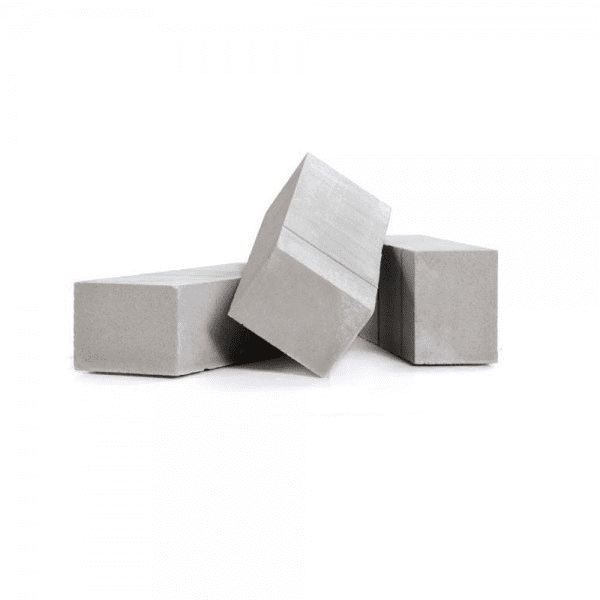Autoclaved Aerated Concrete (AAC) is Load-bearing, Light weight, High-insulating, Durable building product produced in wide range of strengths and sizes. AAC blocks also improves quality of building at the same time decrease cost of building construction.
AAC bricks are made from fine ground silica sand, Fly ash, and Portland cement, Lime, water, and aluminum powder. These Blocks are produced from mix of quartz sand, pulverized fly ash, lime, cement, gypsum, water and aluminum and it hardened by stem curing. AAC blocks is used in many building constructions, for example in residential homes, industrial buildings, schools, hospitals, hotels and many other applications. These blocks contains 60% to 85% air by volume.

Advantages of Using AAC blocks in Construction:
There are many advantages of AAC blocks over the traditional bricks. Some of them are:
- Light weightiness: One of the biggest features of AAC blocks is its light weight. These blocks possess a cellular structure created during the manufacturing process. Millions of tiny air cells impart AAC blocks very light weight structure. The density of these lightweight blocks usually ranges between 550 – 650 kg/m³ making them lighter than water.
- Savings on Building Materials: AAC blocks are almost 80% lighter than conventional bricks or blocks which results into decrease the dead load of building and gradually decrease quantity of cement, aggregate, reinforcement used in building construction.
- Earthquake Resistant: As the impact of the earthquake is directly proportional to the weight of the building so the building constructed using AAC blocks are more reliable and safer.
- Faster Construction: As AAC blocks are larger in size, easy to handle and light weight so the speed of construction will be faster than conventional bricks.
- Fire Resistance: AAC blocks offer great fire resistance from 2hrs-6hrs depending on the thickness of blocks. The areas at which there is high priority for fire resistance AAC blocks are the best example.
- Good Compressive Strength: AAC blocks have average compressive strength 3-4.5 N/sq.mm which is greater than conventional red clay bricks.
- Superior Strength: High level strength of blocks gives higher stability to building structure, AAC blocks are highly superior in terms of strength
- Resistant to termite attacks: Autoclaved Aerated Concrete (AAC) Block consist of the inorganic material in its constitution which helps to avoid termites attacks that happen in the case of clay bricks.
- Sound Proof: AAC blocks have been an ideal material for the construction of walls in the auditorium, hotels, hospitals, studios, etc. The Sound Transmission Class rating of the AAC block is up to 45 db.
- Attractive Appearance: AAC Blocks have an attractive appearance and are readily adaptable to any style of architecture. Almost any design can be achieved with AAC.
- Low Water Absorption: AAC blocks have lots of “macro pores” in which air bubbles are evenly distributed and not interconnected. Hence, absorption of water into AAC material is minimal.
- Less Pollution: AAC is a non-toxic product which does not pollute the air, land or water. During the manufacturing process, waste from the cutting process is recycled back into raw materials and used again causing lesser pollution.
The energy consumed in the production process is only a fraction compared to the production of other materials.
The manufacturing process emits no pollutants and creates no by-products or toxic waste products. AAC is manufactured from natural raw materials. The finished product is thrice the volume of the raw materials used, making it extremely resource-efficient and environmentally friendly.
Disadvantages of Using AAC blocks in Construction:
- Cost: AAC blocks are currently costlier than the traditional red clay bricks due to which these blocks are not widely used in Low rise residential bungalow construction
- Wastage at Site: There is a constraint on the size of ACC blocks available in the market. Usually blocks of 600X200 size are available in the market. Due to this wastage while installation of ACC blocks is more as compared to red clay bricks. AAC bricks have to be handled carefully to avoid wastage.
- Availability of material: Since ACC blocks are factory made and requires a lot of setup, these blocks are not as locally available as red clay bricks.
Although AAC blocks have few disadvantages like the ones mentioned above, the pros of these blocks outweigh the cons. So, the blocks have gained wide popularity in high rise residential and commercial constructions.
Raw Materials Required for Producing AAC blocks
- Cement
- FlyAsh
- Lime
technical Specifications of AAC blocks
| Dimensional Precision | +/- 2mm |
| Precision in Size Variation | 2mm (+/-) |
| Compressive Strength | 35kg to 40kg per Cm2 / 3.5 to 4.0 N/mm2 conforming to IS 2185/1984 |
| Fire Resistance | 1600° Celsius for 6 hours for a block with 200mm thickness |
| Density | 600-650 kg/m3 (dry) |
| Sound Reduction index (dB) | 45db for 200 mm thick wall |
| Thermal Conductivity | Low – 0.16 kelvin per meter. |
| Color | Light Grey |
Standard Sizes Available in AAC blocks
Size-1 : 600mm x 200mm x 100mm
Size-2 : 600mm x 200mm x 150mm
Size-3 : 600mm x 200mm x 200mm
Size-4 : 600mm x 200mm x 250mm





